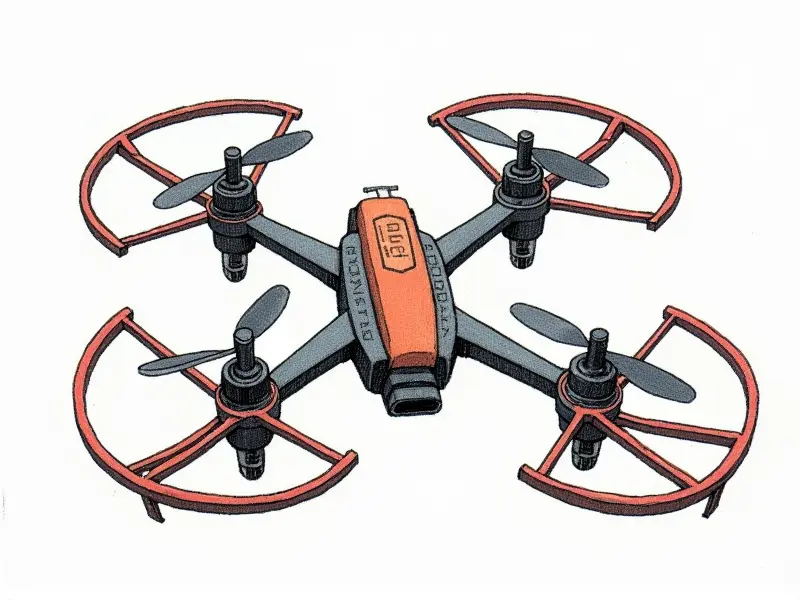What is drone auto-pilot system?

Beginner's Guide to Drone Autopilot
Welcome to the world of drone autopilot systems! This comprehensive guide will introduce you to the basics, features, and benefits of using an autopilot system for your drone. Whether you're a hobbyist or a professional in fields like agriculture, construction, or photography, understanding how drone autopilot works can significantly enhance your capabilities.
Understanding Drone Autopilot Features
A drone autopilot system is a sophisticated technology that allows unmanned aerial vehicles (UAVs) to operate autonomously. It includes various features such as:
- Waypoint Navigation: The ability to program specific GPS coordinates for the drone to follow.
- Mission Planning: Creating and saving flight paths, including takeoff, landing, and intermediate waypoints.
- Altitude Control: Maintaining a consistent altitude during flights.
- Return-to-Home (RTH): Automatically returning the drone to its starting point if signal is lost or battery runs low.
- Obstacle Avoidance: Detecting and avoiding obstacles in real-time using sensors like LiDAR, ultrasonic, or infrared.
Benefits of Using Drone Autopilot
The advantages of utilizing a drone autopilot system are numerous. Here are some key benefits:
- Increased Efficiency: Automating tasks reduces the need for manual control, allowing operators to focus on other critical aspects.
- Safety Enhancements: Autopilot systems can prevent accidents by maintaining safe distances from obstacles and ensuring stable flight conditions.
- Data Accuracy: Consistent and precise data collection is crucial for industries like agriculture, where drones are used to monitor crop health.
- Cost Reduction: By minimizing human error and optimizing flight paths, autopilot systems can lead to significant cost savings over time.
How Does Drone Auto-Pilot Work?
A drone autopilot system operates through a combination of hardware and software components. The hardware includes sensors like GPS receivers, accelerometers, gyroscopes, and barometric pressure sensors. These devices gather data about the drone's position, orientation, speed, and altitude.
The software processes this information to control various aspects of the drone’s flight:
- Flight Control Algorithms: These algorithms interpret sensor data and adjust the drone's movements accordingly.
- Mission Planning Software: Allows users to define mission parameters, such as waypoints and altitude constraints.
- Data Logging & Analysis: Captures flight data for post-flight analysis and optimization of future missions.
Mastering Drone Autopilot Functionality
To fully leverage the capabilities of a drone autopilot system, it's essential to understand how to configure and operate its features effectively. Here are some tips:
- Familiarize Yourself with Mission Planning Tools: Learn how to create detailed flight paths using mission planning software.
- Test Obstacle Avoidance Settings: Ensure that the drone can navigate safely around obstacles in various environments.
- Practice RTH Scenarios: Test the return-to-home feature under different conditions to ensure reliability.
The Basics of Drone Autopilot Systems
At its core, a drone autopilot system is designed to automate flight operations and enhance safety. It consists of several key components:
- Flight Controller: The brain of the system that processes sensor data and controls motor outputs.
- Sensors: Various sensors like GPS, accelerometers, gyroscopes, and barometric pressure sensors provide real-time flight information.
- Mission Planning Software: Enables users to define complex missions with multiple waypoints and parameters.
What Can Drone Autopilot Do for You?
A drone autopilot system can perform a wide range of tasks, from simple waypoint navigation to advanced data collection. Here are some examples:
- Surveying Landscapes: Quickly map large areas using predefined flight paths.
- Maintaining Infrastructure: Inspect bridges, power lines, and other structures without risking human safety.
- Agricultural Monitoring: Monitor crop health by capturing high-resolution images over vast fields.
Exploring Drone Autopilot Capabilities
The capabilities of a drone autopilot system extend beyond basic navigation. Here are some advanced features to explore:
- Multispectral Imaging: Capture detailed images in multiple spectral bands for enhanced data analysis.
- Volumetric Analysis: Measure volumes of materials like soil, sand, or construction debris accurately.
- Night Vision Capabilities: Utilize infrared sensors to operate drones safely and effectively during nighttime operations.
Why You Need Drone Autopilot Today
The demand for drone technology is rapidly increasing across various industries. An autopilot system equips you with the tools necessary to stay competitive:
- Increase Operational Efficiency: Automate routine tasks and streamline workflows.
- Enhance Safety Standards: Minimize risks associated with manual drone operations.
- Gain a Competitive Edge: Offer superior services that set you apart from competitors.
Unveiling the Secrets of Drone Autopilot
To unlock the full potential of your drone autopilot system, it's crucial to delve deeper into its features and functionalities. Here are some advanced tips:
- Leverage Advanced Algorithms: Utilize sophisticated algorithms for more precise flight control.
- Integrate with Third-Party Software: Enhance your system by integrating it with other applications like GIS tools or data analytics platforms.
- Stay Updated with Firmware Updates: Regularly update the firmware to access new features and improvements.
Top Drone Autopilot Functions Explained
The top functions of a drone autopilot system include:
- Waypoint Navigation: Precise control over flight paths for consistent data collection.
- Mission Planning: Create complex missions with multiple waypoints and parameters.
- Altitude Control: Maintain stable altitude during flights to ensure accurate data capture.
In conclusion, a drone autopilot system is an indispensable tool for anyone looking to enhance their drone operations. By understanding its features, benefits, and advanced capabilities, you can unlock new opportunities in your field and stay ahead of the curve.

